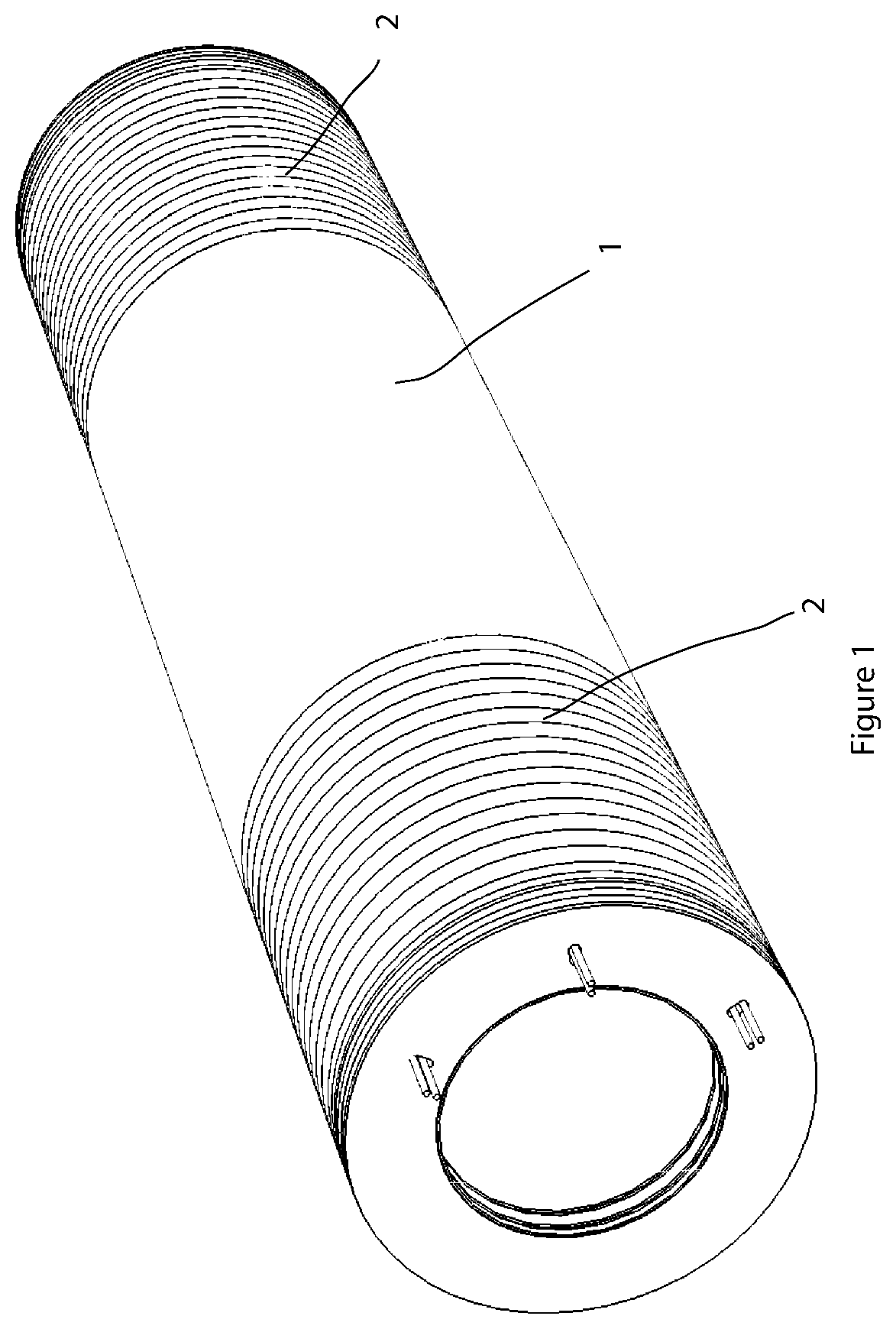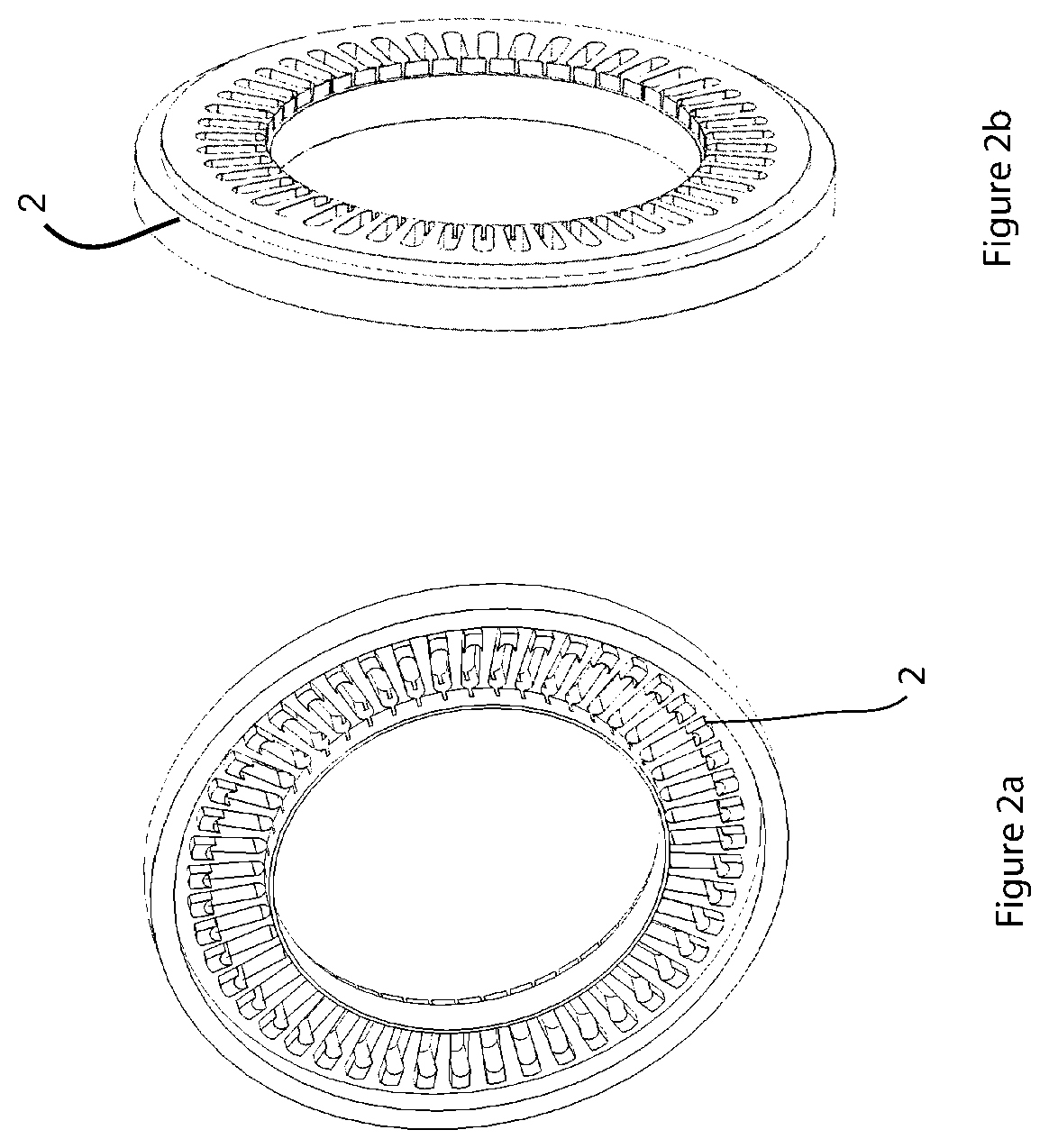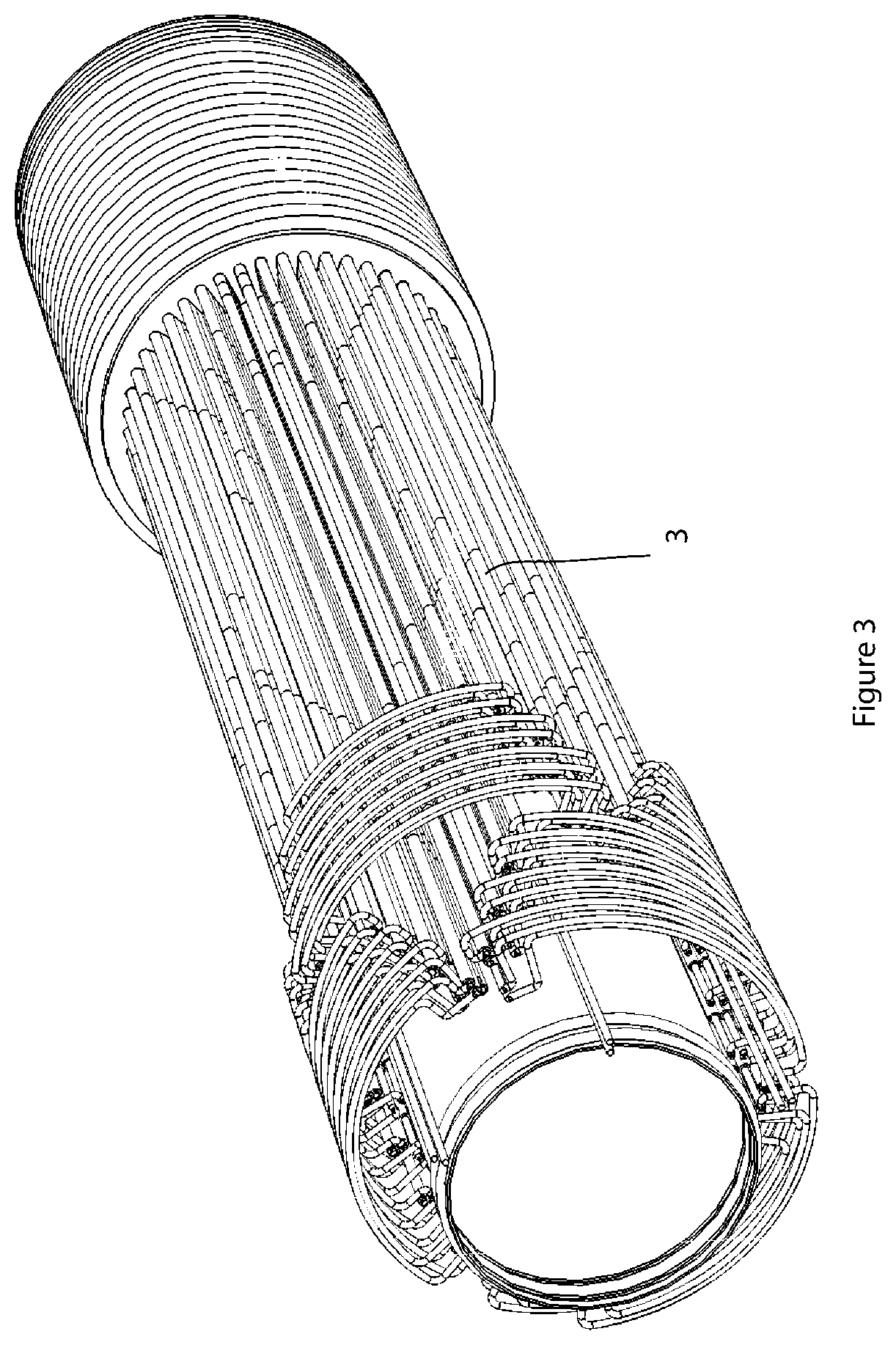Very high temperature electrical winding
a technology of electrical winding and high temperature, which is applied in the direction of windings, dynamo-electric components, dynamo-electric machines, etc., can solve the problems of difficult thermal management of electrical conductors, high manufacturing costs, and inconvenient turning of insulation materials, so as to reduce wear and easy sealing
- Summary
- Abstract
- Description
- Claims
- Application Information
AI Technical Summary
Benefits of technology
Problems solved by technology
Method used
Image
Examples
Embodiment Construction
[0037]Referring to FIG. 1 there is shown a stator construction consisting of a stack of motor laminations 1 with two stacks of ceramic insulated end turn laminations 2 located at both ends of the series conventional laminations 1.
[0038]Referring to FIG. 6, the motor laminations 1 are of a generally conventional one-piece arrangement, made for example from sheet steel, having an outer circumferential yoke 17, with radially extending teeth 18. In this embodiment, rather than conventional discreet tooth lips, the tooth lips meet to form a continuous inner annular barrier 19.
[0039]The conductors of the windings are then disposed in slots 6 and insulated in various ways. Referring to FIG. 3, each conductor is threaded through a ceramic tube 3, and each ceramic tube is inserted into the slots 6 of FIG. 6.
[0040]Alternatively, the ceramic tube may be formed of separate pieces. Referring to FIGS. 8 and 9, conductors 25 may be threaded through or encased in two part interlocking ceramic extru...
PUM
 Login to View More
Login to View More Abstract
Description
Claims
Application Information
 Login to View More
Login to View More - R&D
- Intellectual Property
- Life Sciences
- Materials
- Tech Scout
- Unparalleled Data Quality
- Higher Quality Content
- 60% Fewer Hallucinations
Browse by: Latest US Patents, China's latest patents, Technical Efficacy Thesaurus, Application Domain, Technology Topic, Popular Technical Reports.
© 2025 PatSnap. All rights reserved.Legal|Privacy policy|Modern Slavery Act Transparency Statement|Sitemap|About US| Contact US: help@patsnap.com



